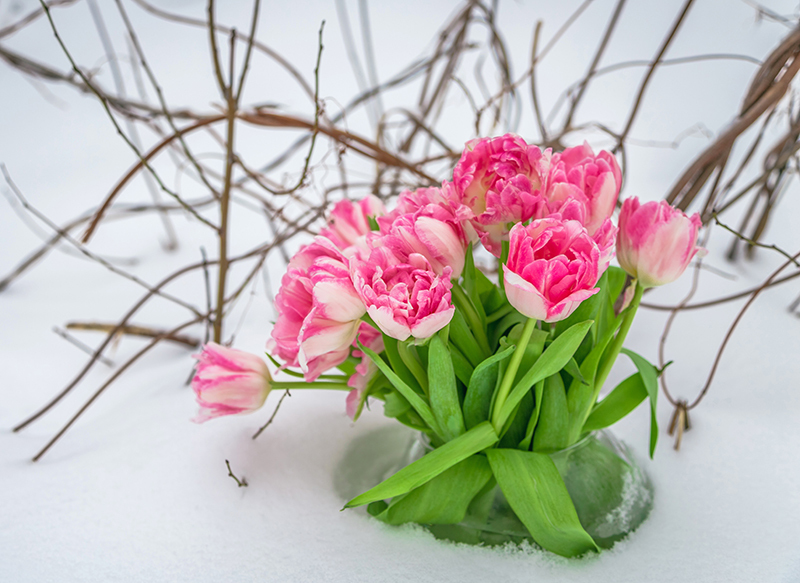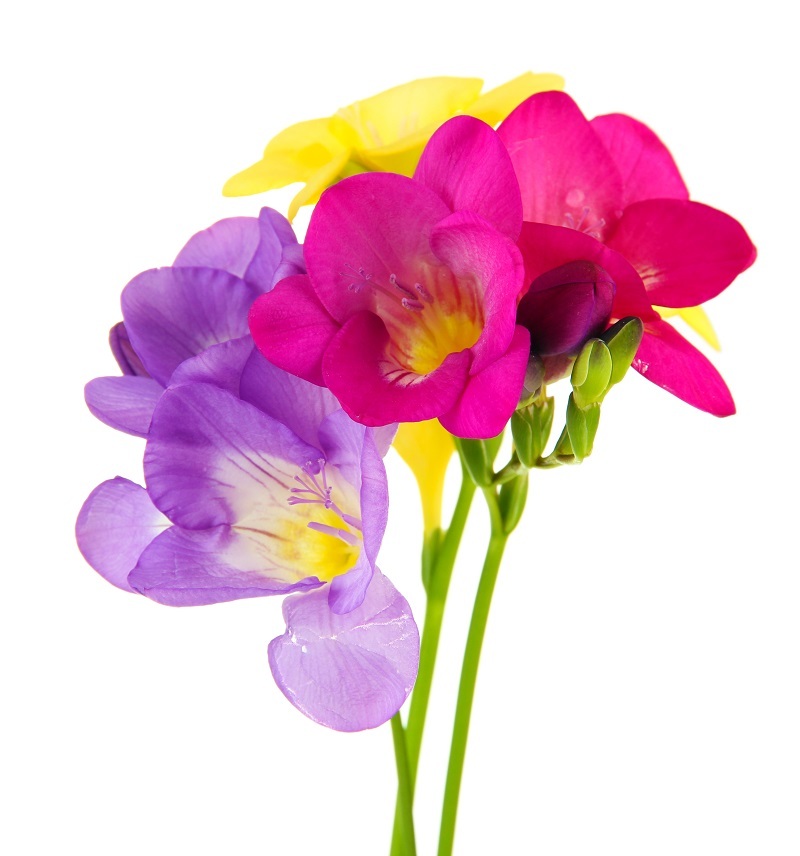Enhance the Vibrancy of Your Poinsettias All Winter Long
Posted on 17/08/2025
Enhance the Vibrancy of Your Poinsettias All Winter Long
Poinsettias are one of the most iconic flowers of the winter holiday season. Their vivid red, pink, or white bracts bring a cheerful splash of color to homes during the coldest months. However, many plant lovers find that their poinsettias begin to fade too soon, losing their vibrancy and becoming lackluster as the weeks go by.
Ready to keep your prized poinsettia brilliant throughout winter? This comprehensive guide offers expert tips and tricks to enhance the vibrancy of your poinsettias all winter long. Learn essential care techniques, troubleshooting advice, and secrets to ensure these radiant blooms dazzle your home until spring!
Understanding Poinsettia Vibrancy: What Makes Them Shine?
The most captivating feature of the poinsettia (Euphorbia pulcherrima) isn't actually their flowers, but their colorful bracts--the modified leaves that surround the plant's small, yellow blossoms. These bracts can display stunning shades of red, pink, white, cream, or even marbled combinations, bringing festive charm to any indoor setting.
- Healthy bracts are the key to vibrancy; when compromised, their color dulls and leaves may drop prematurely.
- Poinsettias are native to Mexico and thrive in warm, humid, and bright conditions--quite different from the dry, drafty environments of most heated homes in winter!
What Causes Poinsettias to Lose Color?
- Poor light exposure: Insufficient sunlight leads to faded bracts and leaf loss.
- Temperature extremes: Drafts, heat sources, or cold can shock the plant.
- Improper watering: Overwatering and underwatering leach nutrients or induce wilt.
- Low humidity: Makes bracts crisp and less vibrant.
- Transplant shock: Sudden moves stress the plant.
The goal is to recreate the stable, bright, and warm environment poinsettias love!

Mastering Poinsettia Care for Maximum Winter Vibrancy
Optimal poinsettia care during winter involves balancing several factors: placement, watering, humidity, temperature, feeding, and routine maintenance.
1. Location: Place for Performance
- Choose a bright spot: Poinsettias thrive in indirect sunlight. East- or west-facing windows are ideal. Too much direct sunlight, especially behind glass, can scorch bracts and leaves.
- Maintain a consistent environment: Avoid placing your poinsettia near heaters, radiators, cold windows, or drafty doors. Sudden changes in temperature can cause bract drop and dulling.
- Rotate weekly: Gently spin the pot to ensure even light exposure and uniform color development all around.
2. Watering Wisdom: Keep Soil Moisture Just Right
- Check soil regularly: Insert a finger up to the first knuckle. Water only if the top inch feels dry--never let the soil get soggy or bone-dry.
- Drain excess water: Poinsettias hate "wet feet." If your plant comes in a decorative foil, poke drainage holes or remove the pot from the cover to ensure proper drainage.
- Water with room temperature water: Cold water can shock roots, while hot water damages them.
3. Humidity Help: Mimic a Tropical Winter
- Mist the leaves: Lightly misting the bracts and foliage helps counteract the dry air from indoor heating.
- Group with other plants: Houseplants release moisture, raising the immediate humidity around your poinsettia.
- Use a pebble tray: Set your poinsettia pot on a shallow tray filled with water and pebbles--the evaporation increases humidity without risk of root rot.
4. Temperature Control: Cozy but Not Too Warm
- Ideal range: Maintain daytime temperatures between 65-70?F (18-21?C), and around 60?F (15?C) at night.
- Keep away from sudden chills or blasts of heat: Drafts from doors, fireplaces, or heating vents can cause bract drop.
5. Fertilization: Fuel the Color and Growth
- Feed sparingly: If it's in full bloom, fertilize every 3-4 weeks with a balanced, all-purpose houseplant fertilizer at half strength.
- Don't overdo it: Too much fertilizer can actually burn the roots and dull the bracts.
6. Clean Leaves for Lasting Radiance
- Remove dust gently: Use a soft, damp cloth to wipe the leaves and bracts. Dust blocks light and reduces color intensity.
- Avoid leaf-shine chemicals: These can clog pores on leaves, trapping moisture and risking disease.
7. Prune Wisely
- Remove spent bracts and faded leaves: This encourages the plant to focus energy on keeping the remaining foliage vibrant.
- Save big pruning for spring: Extensive trimming or repotting is best done after the chance of frost and after the holidays.
Troubleshooting Common Poinsettia Problems
Wondering how to revive a wilting or fading plant? Recognize these common issues and rescue your poinsettia's color fast:
Yellow, Sluggish, or Dropping Leaves
- Likely a sign of overwatering or root rot. Cut back on water, check for drainage, and let soil dry slightly between waterings.
- Also caused by cold drafts--move the plant to a warmer spot.
Crispy Brown Bracts or Leaf Tips
- Usually due to very dry indoor air. Increase humidity, mist regularly, and group with other plants.
- Could also be from excessive direct sunlight.
Bract Color Fading Too Soon
- Lack of light is the main culprit. Move to a brighter spot but still avoid hot direct sun.
- Sometimes, it's a natural part of the plant's cycle as blooms mature, especially after several weeks.
Dropped Bracts or Leaves
- Usually from temperature fluctuations or drafts.
- Water stress can also cause sudden shedding.
Advanced Tips: Prolonging the Vibrant Color of Poinsettias
If you're looking to truly maximize the vibrancy and lifespan of your poinsettias indoors, consider these expert strategies:
Choose Wisely
- When buying, select a poinsettia with bright, full bracts and dense green leaves. Avoid plants with drooping, wilted, or yellowing foliage.
- Look for specimens that still have some unopened yellow flowers at the bract center--these tend to last longer.
Acclimatize After Purchase
- Wrap the plant in paper when taking it home during winter to prevent shock from cold air.
- Let the poinsettia sit in its new location for a day or two before removing any protective wrappings.
Monitor Regularly
- Check daily for water needs--poinsettias can wilt quickly if dry, but also succumb to root rot if overwatered.
- Quickly address any pests (like whiteflies, aphids, or mites) with insecticidal soap or a shower of water.
Creative Display Choices
- Combine poinsettias with greenery or evergreens in a planter to increase humidity and create a lush winter scene.
- Use colorful pots or decorative sleeves to further enhance your holiday decor and make the bracts pop!
Keep Away from Ethylene Gas
- Poinsettias are sensitive to ethylene, which causes premature aging. Keep them away from ripening fruit (bananas, apples), which emit this gas.
Poinsettia Longevity: Can You Keep Vibrant Plants Year-Round?
While most poinsettias are enjoyed as seasonal plants, with proper care you can keep them alive and bright for months. In fact, with dedication, poinsettias can survive for years--some even rebloom the following season!
Post-Holiday Poinsettia Care
- Once the bracts fade and fall in late winter or early spring, cut the plant back to about 6-8 inches above the soil.
- Move the poinsettia to a slightly cooler, but still bright, spot and water less frequently.
- Resume regular watering and feeding in spring as growth resumes, moving the plant outdoors when temperatures are above 60?F at night.
Re-Bloom Challenge
If you want to re-bloom your poinsettia for next winter, remember:
- Starting in early autumn (late September or October), give the plant complete darkness for 14 hours a day (such as in a closet or box) and bright light for the remaining 10 hours.
- This triggers bract color change. Repeat for 8-10 weeks, then return to normal lighting once colored.

FAQs: Keeping Poinsettias Vibrant through Winter
How long do poinsettias usually last indoors?
With proper care, most poinsettia plants retain their bright bracts for 6-8 weeks, often longer. Many can last well into March if growing conditions are ideal.
Can you use plant lights to enhance poinsettia color?
Yes! Full-spectrum LED grow lights, placed about a foot above, can supplement natural light to maintain poinsettia vibrancy in dark rooms during winter months.
Are poinsettias poisonous to pets?
Poinsettias are not highly toxic but may cause mild stomach upset if ingested. Keep them out of reach of curious pets or children.
Can I fertilize my poinsettia in winter?
Yes, but use a diluted, balanced fertilizer sparingly (no more than once every 3-4 weeks) to avoid stressing the plant while it actively displays color.
Conclusion: Enjoy Dazzling Poinsettias All Winter
By following these key strategies--proper placement, watering, humidity, temperature control, gentle feeding, and regular upkeep--you can enhance the vibrancy of your poinsettias all winter long. Whether you love the classic red, are dazzled by frosty whites, or seek out the newest variegated varieties, your poinsettias will continue to shine bright and beautiful in your home throughout the cold season.
With just a bit of attention and care, your winter holidays will always be filled with the vibrant glow of healthy, thriving poinsettias!
Latest Posts
Enhance the Vibrancy of Your Poinsettias All Winter Long
Unforgettable Birthday Flowers for Special Celebrations
Transform Your Garden with Proper Hydrangea Care
The Top 10 Uncomplicated Plants for an Inviting Office Space





